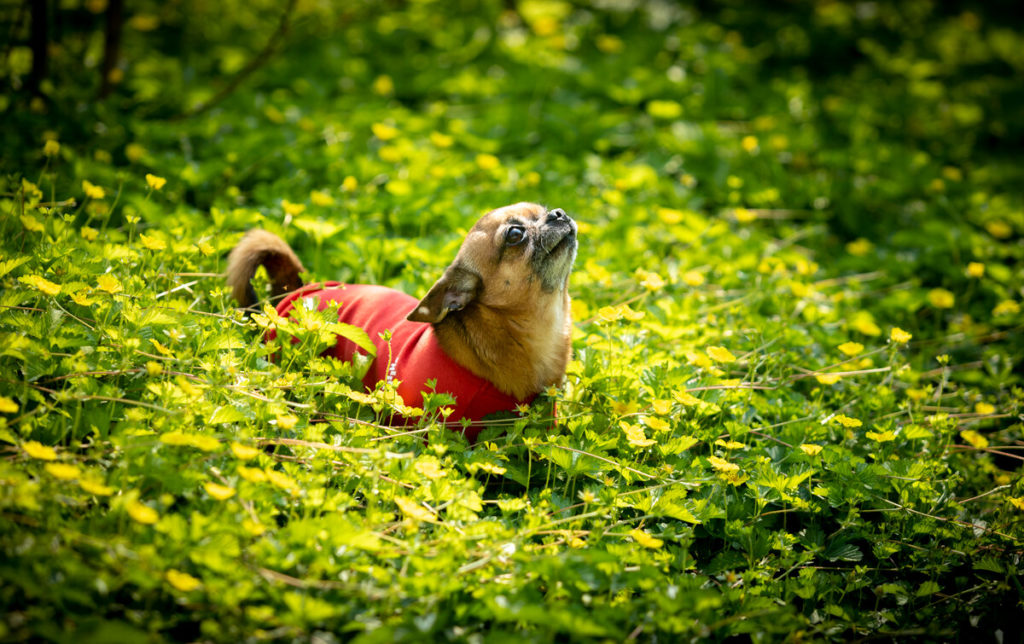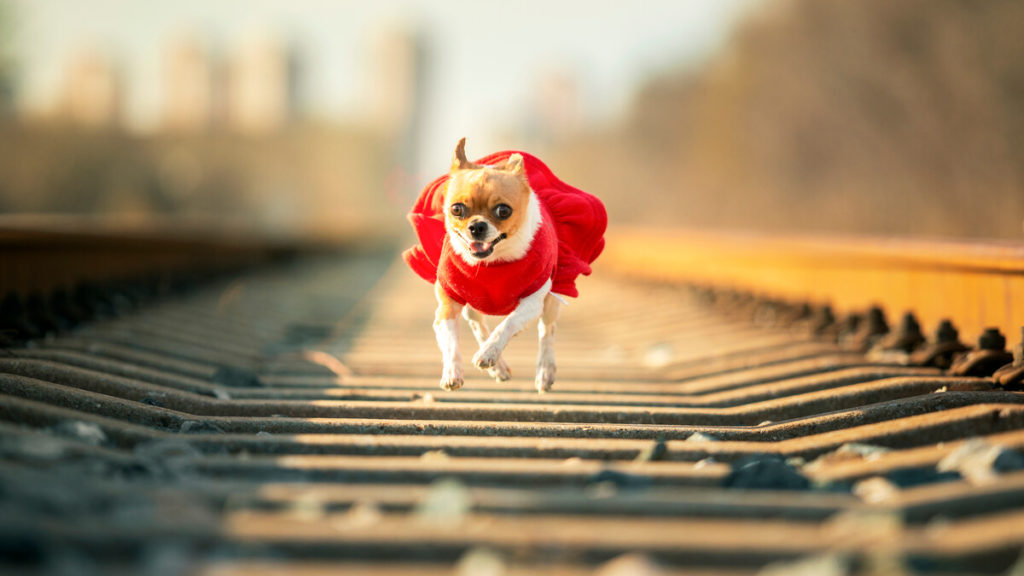Every Golden Retriever owner gets very excited after bringing home a Golden Retriever. Even you too. You might want to take great care regarding his diet and exercise. Actually, then comes a question, how much exercise does a Golden need? What is the best exercise for Goldens? What are your Golden Retriever exercise requirements?
As a loving owner, you must have an idea regarding your Golden Retriever exercise needs. You will find answers to all the above questions clearly in this article.

Every Golden Retriever irrespective of its age whether young or old, irrespective of his colour, whether yellow, chocolate or black and irrespective of its type, whether working or show needs exercise. Because exercise is the most thing important for its physical and mental well being.
Exercising your Golden keeps his muscles strong, organs healthy and his mind active. As i mentioned above exercise is important, even if your Golden Retriever is a puppy, adult or a senior dog. The only thing we need to consider is “How much exercise do Goldens need?”, how much for a puppy, how much for an adult one and an elderly Golden Retriever.
How much exercise does a Golden need?
Coming straight to the point, a healthy adult Golden Retriever needs roughly 1 hour of exercise every day. But is this a thumb rule? No. Hence, considering this 1-hour rule for every Golden Retriever can lead to a disproportionate amount of exercise for your Golden Retriever which further can cause various problems related to its health and behaviour.
The amount of exercise a Golden Retriever needs depends on certain factors such as its age, health condition and type of exercise. Before going deep regarding Golden Retriever exercise, it is important to know, why Goldens need daily exercise and whether they need a lot of exercises or not.
Do Golden Retrievers need a lot of exercise?
All dogs are not the same in terms of their essential physical activity. Some dog breeds need a lot of physical activity, whereas, for some other breeds, a simple walk may be sufficient. Here, Golden Retrievers come under the category of dogs that need the most exercise.
The reason for this can be traced to its origins and purposes why they were bred for. Golden Retrievers are highly energetic dogs initially bred for physically demanding works. They were bred for retrieving purposes. This can sometimes include an all-day activity. They used to involve in running, jumping and swimming for long hours and sometimes even the whole day.
What does this mean?
The body of a Golden Retriever was genetically designed for performing a lot of physical activity. Even though in the present world, Golden Retrievers became family pets sitting on the sofa along with us, they have the genetics to perform their original roles.
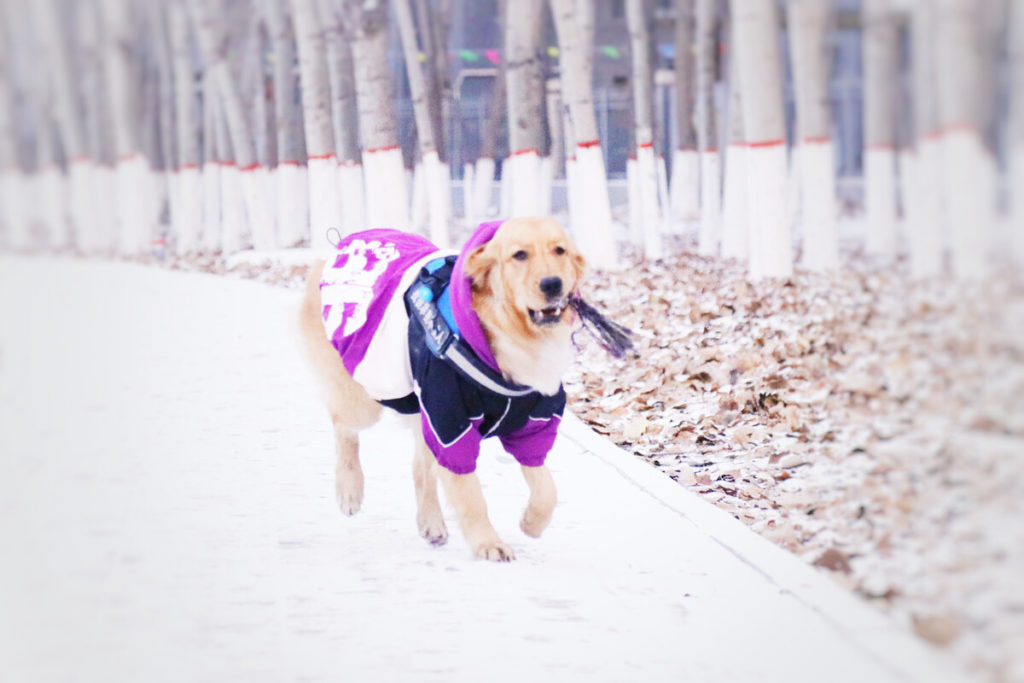
5 Reasons why Golden Retrievers need exercise?
- Golden Retriever is a high energy working breed.
- A Golden Retriever’s body craves for a lot of physical activity.
- Goldens don’t like sitting in the home. They are not couch potatoes.
- Lack of exercise can cause weight gain and other health and behaviour related problems.
- Their bodies are designed in that way.
How much exercise does a Golden puppy need?
A puppy is new to this world, and i seriously think if any form of exercise is really necessary for his cute little legs. But many Golden Retriever owners ask me about their Golden Retriever puppy walking and other forms of exercise.
But is it a good idea to strain his little legs at such a tender age? No, not at all. Hence i do not recommend any form of exercise pattern for your little one until he is at least 3 months old.
Let him play, let him explore the world. The little exercise in the form of play is more than enough for your little Golden Retriever until 3 months of age.
Then what after 3 months? Remember this “Five-minute rule”. This is called the “Golden Retriever exercise 5 minute rule”. 5 minutes for every month of age, which means 15 minutes for a 3-month puppy, 20 minutes for a 4-month puppy.
Even though this is not a strict timing, this Five-minute rule can be followed until your Golden attains an age of 1 year. Always remember that your puppy should not be over-exercised which can cause skeletal developmental issues. These issues can lead to various skeletal problems in the later stages of your Golden’s life.
How much exercise does a Golden Retriever need? (adult Golden)
Is your Golden an adult one? Got ready for exercising your Golden? Remember that you might get tired but your Golden won’t. As i already told you, Golden Retrievers are high energy breeds that were initially bred for physically demanding works such as hunting and retrieving nets and fish. They carry the genes that crave for high physical activity. Hence if you don’t provide ways for physical activity, they vent out their energy in destructive ways.
A minimum exercise for 45 minutes is very essential to your Golden Retriever. For example, for highly energetic dogs like mine, you can extend the exercise for more than 1 hour.
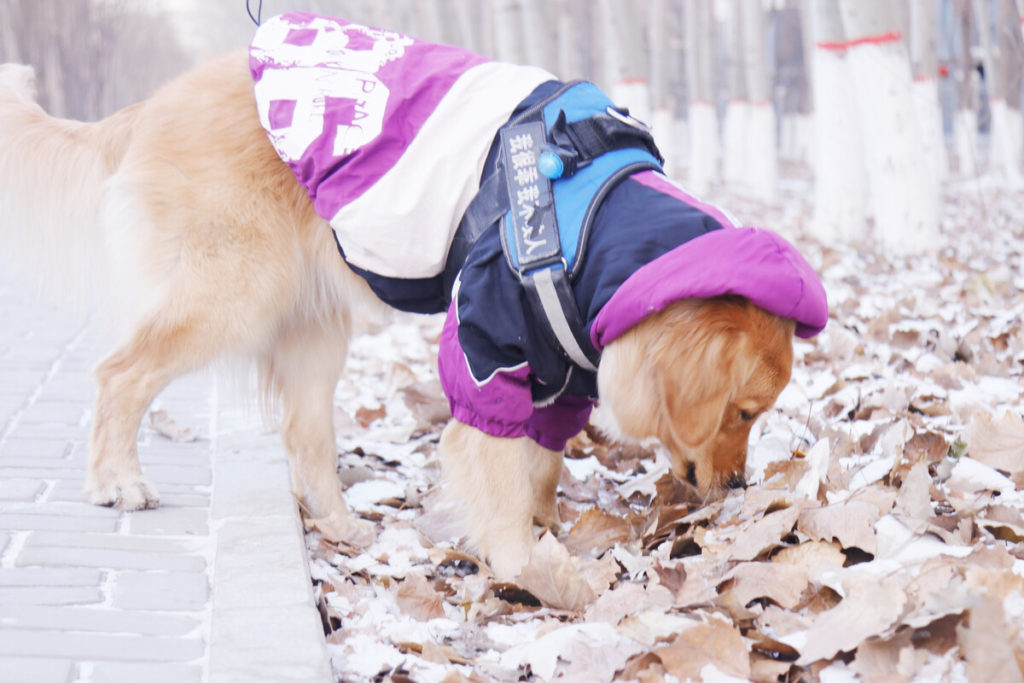
Generally, Golden Retrievers from the working line will require more exercise than the show lines. Exercise doesn’t mean simple walking, it must include various forms of exercises such as playing fetch, jogging, running along with you and also swimming. You can divide the exercise period into schedules such as the morning and evening schedule.
One point you should consider. Always observe your dog during the exercise. Observe whether it is tired, Observe whether it is able to walk or not and Observe whether it is panting heavily.
Sometimes my dog gets tired easily after a 20 min brisk walk. Then in such cases, i prefer to stop his exercise and take him home for rest. Always remember not to over-exercise your dog.
How much exercise does an elderly Golden Retriever need?
Your Golden might slow down when it reaches 7-8 years of age. Even though some Goldens stay active until 10 years of age, 7 years of age reminds us that our Golden is a senior one.
You keep noticing signs such a slowing down, inability to stay active for long hours, unable to perform long walks. Some dogs even develop various health problems such as hip dysplasia and arthritis. Observe the symptoms carefully and design the exercise regime.
Even though your Golden becomes a senior it does not mean it should not exercise. A moderate form of exercise is very beneficial for your elderly dog, especially at that age. Observe if there are any Golden Retriever walking problems.
If your Golden cannot take long walks, take him for a short distant walk for short periods. Take your Golden for a swimming exercise which can be relaxing as it does not cause huge pressure on the joints. Treatments such as Hydrotherapy will be beneficial as it eases joint pains in your dog.
Golden Retriever walking- Is it enough?
One of the main reasons Goldens does not get the required amount of exercise is due to the busy schedule of their owners. Many dog owners might have not thought of it while bringing home a Golden Retriever puppy. Sometimes it is even difficult to find a nearby park or play area for your dog, this happens in busy cities sometimes.
In such cases, the only exercise most of the owners conduct for their Golden Retrievers is simple walking.

But, is walking enough for your Golden Retriever?
Actually, walking is one of the best exercises especially if your Golden Retriever is either a puppy or a senior one. Even for healthy adult Goldens, steady walking is a good form of exercise. It improves your Golden’s physical and mental health simultaneously.
But just walking has some limitations too.
Walking just exercises your Golden’s joints, muscles, heart and lungs moderately. Only at a moderate level. Especially for a breed like Golden Retriever, it would not be sufficient at all. But if you are doing only walking with your dog, it means that your Golden is not getting enough workout for its body.
But what if you are not able to provide any form of exercise other than walking? In such a case, you need to take care that your dog gets the maximum amount of benefit just out of walking itself.
How much walking does a Golden Retriever need?
The exact amount of walking a Golden needs depends upon various factors. Along with major factors such as its age and its health condition, minor factors such as the temperature outside and time of its last meal also play an important role.
But if your Golden is a healthy adult one, it needs at least 1 hour of walking daily. Even this time duration is not a fixed duration, it varies between dogs.
For example, my 2-year-old Golden Retriever gets tired sometimes within half an hour of its walking. Hence i prefer to divide the 1-hour duration of walking between morning and evening. Some times 20 minutes in the morning and 20 minutes in the evening would be enough.
Walking your Golden can also be made different by including variations in walking. Such as speeding up for a few minutes and again walking at a moderate pace depending upon your dog’s needs and interests.
You can also try different routes and allow your Golden to explore different smells to make the walk interesting and exciting for him.
There is no fixed amount of walking required for your Golden, the amount of walking required varies and should be done by taking into consideration your dog’s body language while doing it.
How often should you walk a Golden Retriever?
Exercise should not be a weekend affair. I have heard some people saying that they take their dog for a walk on Sundays. This kind of weekend walking may not be sufficient for your Golden Retriever at all.
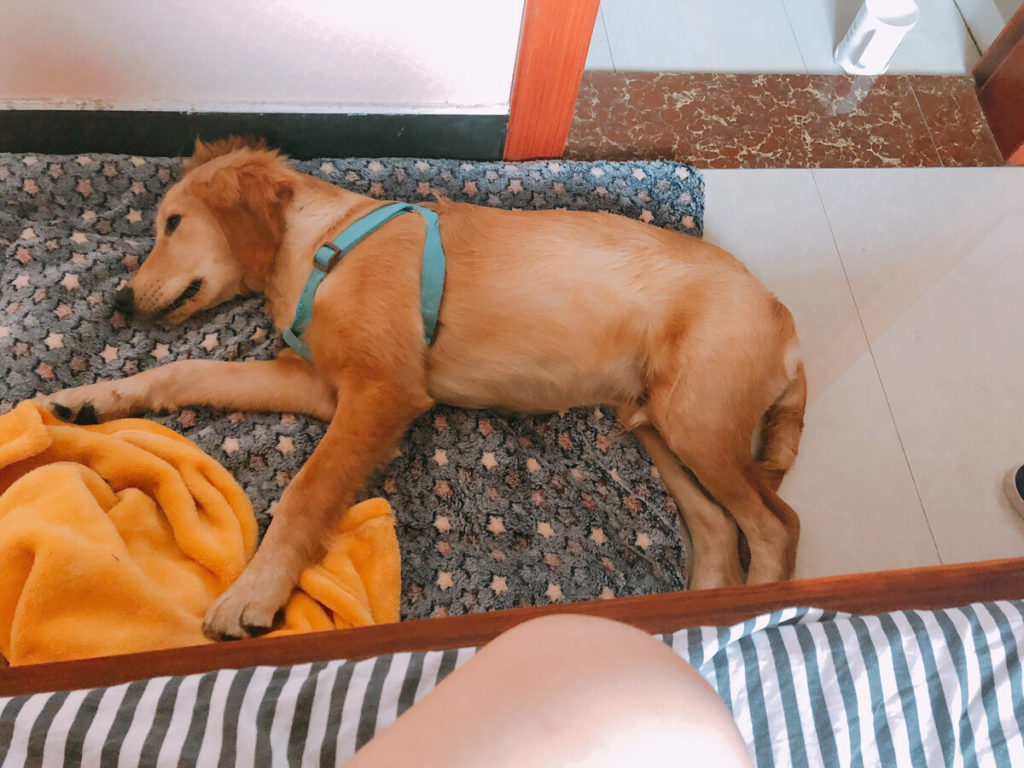
As walking is a simple exercise, it should be done daily.
If you are not able to spend an hour for walking your Golden or if your Golden is not able to walk continuously, conduct a 30 minutes walk- one in the morning and one in the evening.
You can also take your Golden for a walk in the night as nights as less noisy and your dog can feel more relaxed.
Share the duty of walking your Golden between your family members, so that the workload can be reduced.
Check if your Golden is getting enough exercise
Your Golden Retriever generally exhibits some symptoms if he is not getting enough amount of exercise. Check for these symptomatic behaviours in your Golden
- Weight gain and your Golden starts looking chubby.
- Destructive behaviour, he behaves like a tornado.
- Playing roughly with others.
- Hyperactive while going out on a walk.
- Barking and whining sometimes. Your Golden might be asking for freedom.
- Laziness and Depression.
If you find any unwanted behaviour or any of the above symptoms, it might be a case that your Golden is not getting enough exercise. Always remember that a tired dog is a happy dog.
Best ways of exercise for Goldens
Even though walking is a good and simple exercise for your Golden Retriever, it might not be enough. There are other types of exercises that can exercise your Golden well and are beneficial for its well being. Including these different exercises can keep your Golden healthy both physically and mentally.
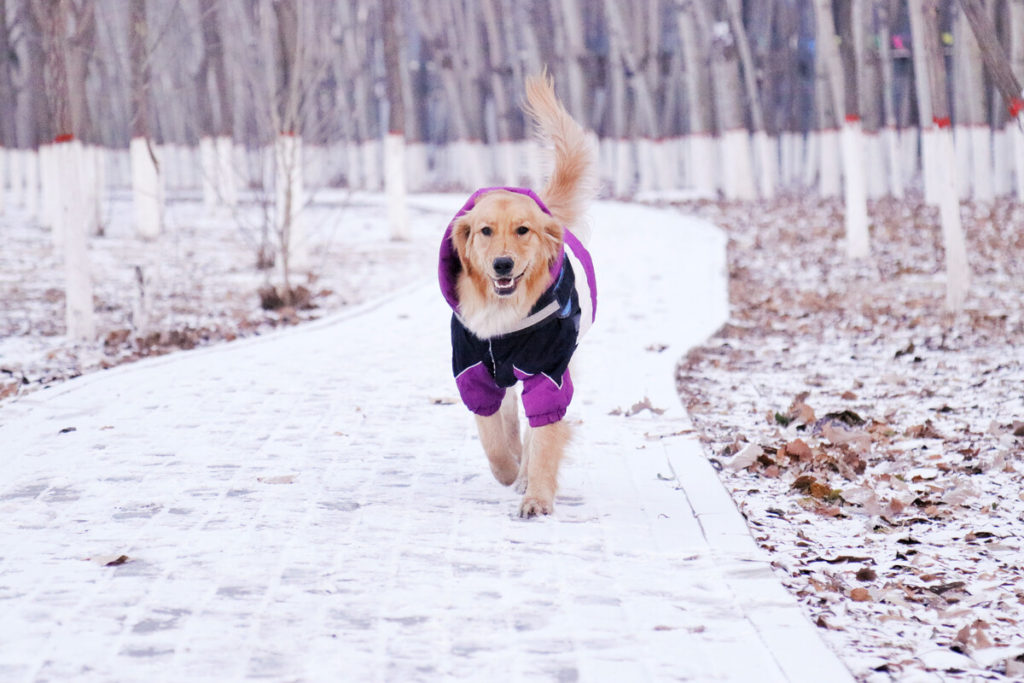
Have a look at the list of best exercises for your Golden Retriever.
- Jogging or cycling
Jogging or cycling with your Golden can be one of the best exercises for him. Breeds like Golden Retrievers are well suited for long and steady runs. They even enjoy these kinds of exercises. My dog loves to jog along with me.
But you need to take some things into consideration before beginning a jogging or cycling routine for your Golden.
Do not prefer these exercises if your Golden Retriever is a very young puppy or a senior one, as it causes excessive strain on their joints.
A young healthy Golden can usually do this exercise. But he should start jogging or cycling only after he gets habituated to the pace. Hence it is always better to start with walking and increase the speed slowly to allow his body to gear up for the exercise session.
- Swimming
Swimming can be another best exercise for your Golden Retriever and trust me, most of the Goldens love swimming. They have a natural affinity with water, and their webbed paws and the double coat makes them natural swimmers.
A swimming exercise for 20 minutes swim could be sufficient for your Golden and could be a good form of exercise.
Although Golden Retrievers are good swimmers, you should take some necessary precautions while taking him for swimming. Things such as using a jacket, checking the currents if the swim is on a beach, and the age of your dog is essential to consider.

Check out our article on at what age can Golden puppies swim for information on Goldens and swimming.
- Hiking
If you want to go hiking, Golden Retrievers can be your best hiking companions. Hiking can be a good exercise for Golden Retrievers. Golden Retrievers have good stamina and strength and this makes them perfect for hiking.
The outdoor activity like hiking stimulates your Golden both physically and mentally. Your dog would love the outdoor exercise. Take your hiking equipment along with necessary precautions and start hiking.
- Playing Fetch
The word retrieving exists in the name itself. The behaviour of retrieving things is very much present in their genetic behaviour. Hence playing fetch is one game that most of the Golden Retrievers love instinctively.
You can also train your Golden to play the perfect fetch game and also make it more interesting by changing the fetch objects. You can use a high impact ball, or a stick or a frisbee to make the game more interesting for your dog.

This fetch game can exercise your Golden well. It is a kind of exercise that activates your dog’s body totally while playing it.
Keep the play session short as it can exhaust your Golden sometimes. A 5 to 10-minute training session a few times a day can exercise your dog well.
What about mental exercises?
Giving your Golden some mental exercise is equally important along with the physical exercise you provide him. Goldens were genetically trained to retrieve things using their intelligence. Imagine how would they feel sitting at home all day without any work for its mind.
Providing mental stimulation in the form of games and exercises will keep your dog mentally alert, active and happy. It is truly beneficial for the overall well being of your Golden.
Have a look at some mental exercises you can provide your Golden.
- Obedience training
Performing obedience training is one of the best ways to stimulate your dog mentally. Obedience training is simply to train your Golden to obey your commands accurately. The way we learn obedience and good habits in our school, the same way this obedience training works for yourGolden.
This provides the necessary mental stimulation to your Golden. This obedience training also asserts your position as a leader and it is also fun to perform.
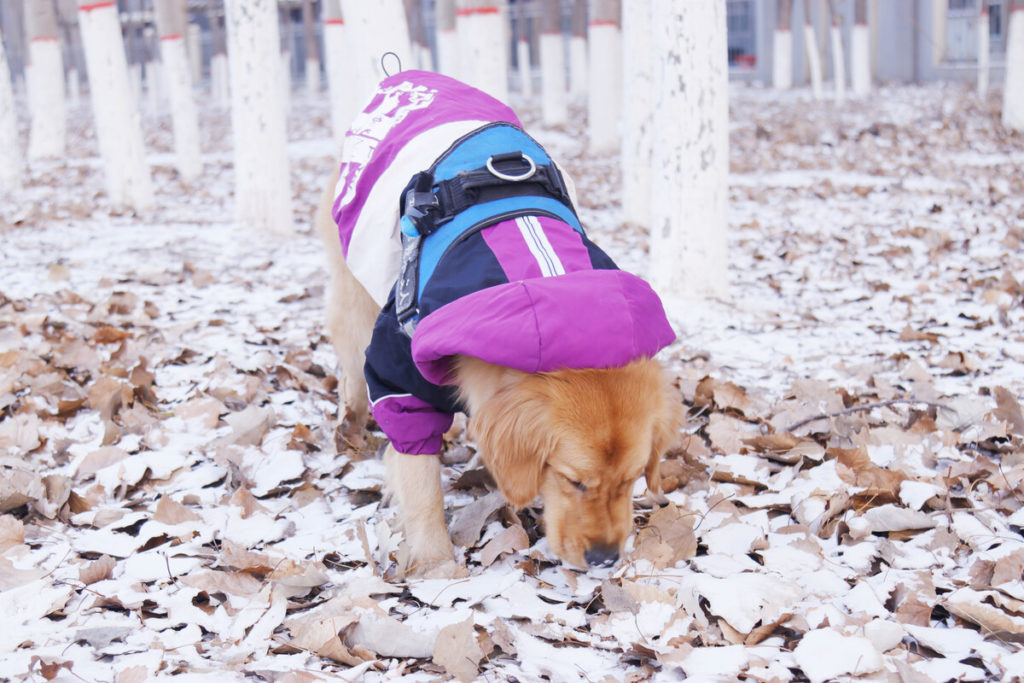
Start reinforcing all the basic commands such as sit, stay, come etc. Repeating these commands and reinforcing them keeps your Golden’s mind active and alert and it responds to these commands effectively.
- Hide the treat game
This is one more game to stimulate and enhance sensory capabilities of your Golden. As your Golden Retriever is a born sniffer, it would always try to find out the hidden treat.
Hide some treats that your Golden likes and that have a strong smell. Hide the treat and ask your dog to find it with a command like, “Go”. Initially hide the treats nearby and in easy places so that your Golden could find them easily. Do not make the game too difficult in the initial stages itself. As your dog understands the game, you could increase the difficulty in later stages.
It is a great game to ignite your Golden’s sniffing ability.
- Interactive toys to play
Sometimes there is no need for you to involve in your dog’s mental exercise. All you need is to provide him with the best interactive, mind-stimulating toys and let him play by himself.
I have observed my Golden playing with its favourite ball, all on its own during the night time. I have observed this a lot many times.
Give your Golden some special toy like the Kong toy or some special toy that can be filled with treats. Now your Golden uses all its brain and energy to get those treats. It would be a great mental exercise for him.
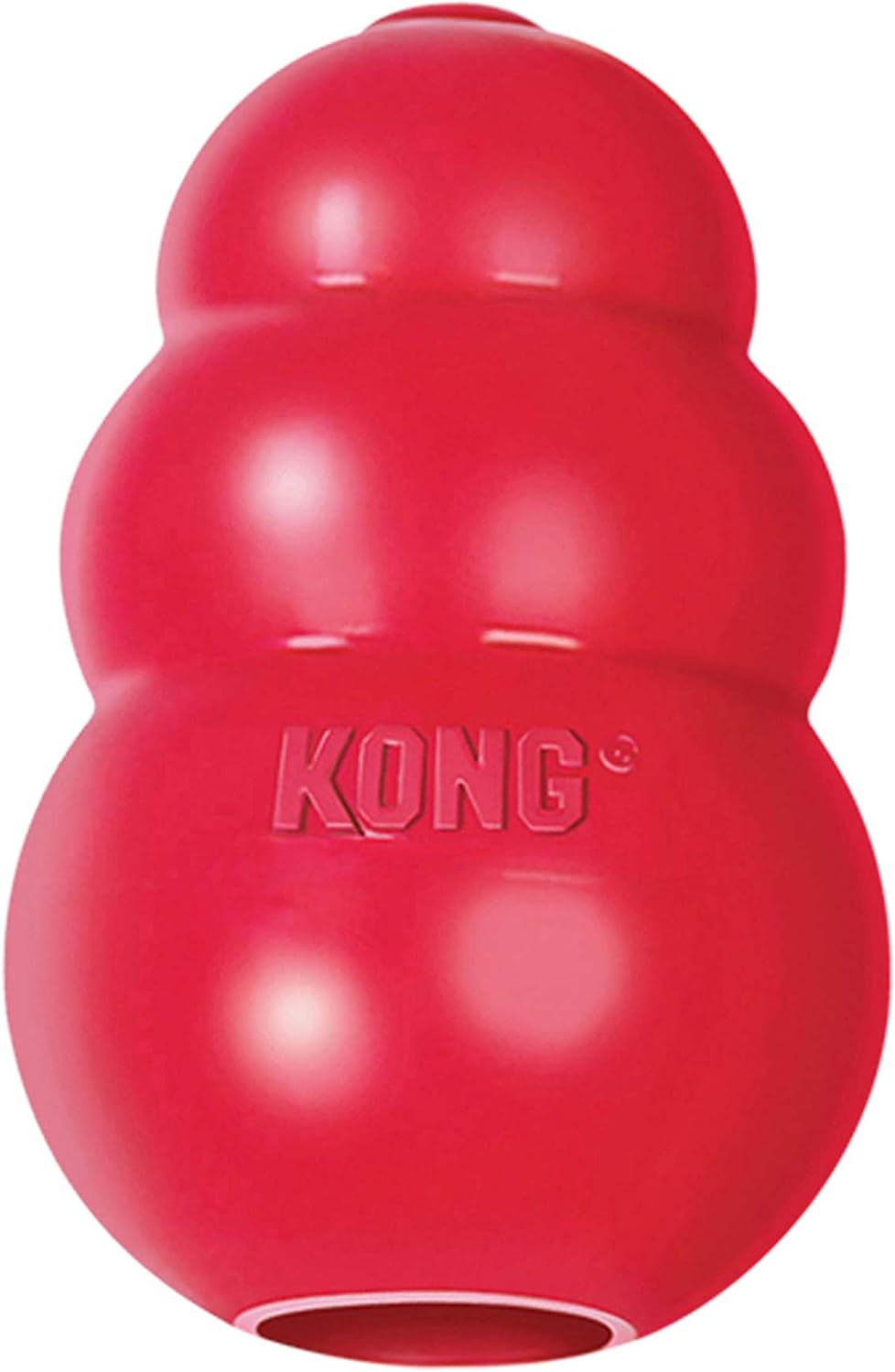
Sometimes your dog’s mind might get conditioned or bored using the same toys again and again. Hence it is good to replace the old toys with new ones.
- Provide a new environment
Take your Golden to a dog park. New environments give your Golden a chance to meet new dogs and new people. Let your dog use it senses to sniff new people, new dogs and allow him to interact with them.
Allow others to pet your Golden, allow other friendly dogs to come near your dog. Allow your Golden to investigate new places.
All these activities are a good form of mental exercises that activate your dog’s mind.
Attention
As a loving Golden Retriever owner, you might be conducting some exercises for your Golden. But sometimes they are not fully sufficient.
Mental exercises are very important along with physical exercises to get rid of many doggy behavioural problems.
A dog without proper mental stimulation can exhibit a bundle of behavioural problems that can cause immense trouble and pain for your dog and your self.



